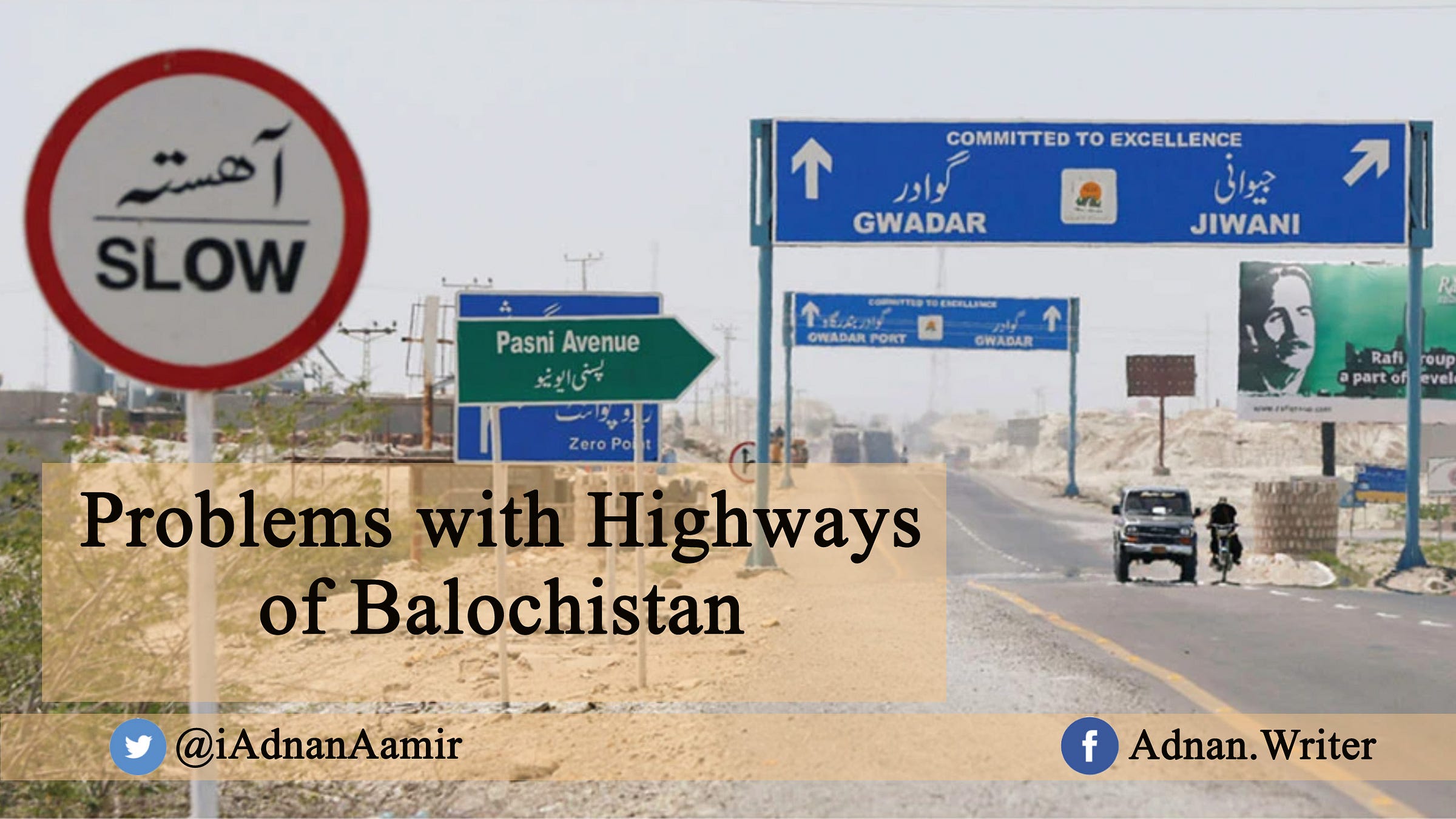Problems with Highways of Balochistan
Federal government has completely ignored the highway development needs of Balochistan.
On June 26, I left Islamabad to travel to Quetta by road to celebrate Eid. Road travel was not my first choice but I was compelled to opt for it when I learned that air tickets for the few flights to Quetta were sold out. The limited air connectivity between Quetta and Islamabad is a major problem since only the national flag carrier, PIA, operates regular flights on this route.
We started the 13-hour journey to Quetta early in the morning. The first four hours of the journey from Islamabad to Dera Ismail Khan are very comfortable, thanks to the Hakla-Yarik M-14 Motorway. From DI Khan to Quetta, it is a different story altogether. Roads are in a dilapidated condition; many bridges are broken. Debris from recent landslides covers the roads, making it an extremely hazardous journey. I learned that the problem is not unique to this route; all highways in Balochistan are in poor condition.
The road route from Islamabad to Quetta has a bottleneck at Danasar, the border of Balochistan and Khyber Pakhtunkhwa. Here the road passes through tall mountains. Even modest rain here results in land sliding and the road has to be closed for traffic. People remain stuck here for hours. The government has not invested enough in this route to ensure that it remains landslide-proof throughout the year.
While traveling on this road, I saw several bridges and portions of the road, especially near turnings, damaged. Upon inquiring, my driver told me that these bridges were damaged during the massive rainfalls and flash floods last year. Almost a year later, the rebuilding work has yet to commence.
It is pertinent to mention that the Federal Minister for Communications Mufti Asad Mehmood of the Jamiat Ulema-i-Islam-Fazl (JUI-F) belongs to DI Khan. Still, there is no visible effort on the part of the government to repair these roads in the vicinity of DI Khan. This speaks volumes about the current government’s priorities.
Once we crossed the historical town of Zhob, the road was in relatively good condition till Quetta. However, it is a narrow two-lane highway without any dividers. This means that overtaking slow-moving traffic on this highway involves the risk of a collision with traffic coming from the opposite direction. Twice our vehicle narrowly missed a head-on collision with passenger buses, which are always in a hurry to overtake.
In order to resolve this problem, the government has started a project to dualize the Quetta-Zhob Highway. However, the project is moving at a snail’s pace and is not expected to be completed in the next five years, if construction work progresses at the same pace.
The torrential rains and subsequent flash floods have washed away the famous Pinjra Bridge in the Bolan region of Balochistan. Located 115 kilometres southeast of Quetta, Pinjra Bridge was used to pass the Bolan River on Quetta-Sukkur Highway.
Torrential rains and subsequent flash floods have washed away the famous Pinjra Bridge in the Bolan region of Balochistan. Located 115 kilometers southeast of Quetta, Pinjra Bridge was used to cross the Bolan River on Quetta-Sukkur Highway. After floods last year, this bridge was temporarily restored and Prime Minister Shahbaz Sharif visited the site to congratulate the construction staff. In April this year, the temporary bridge was swept by rainfall. The bridge has not been repaired yet, resulting in travelers being stranded in Bolan for hours following high levels of water in the Bolan River after rainfall. It’s puzzling that the National Highway Authority has not been able to rebuild a small bridge on a busy interprovincial highway in a year.
The dualization of the Quetta-Karachi Highway has been a very popular and oft-repeated demand by the people of Balochistan. Known as a ‘killer’ highway, the narrow road sees frequent deadly accidents. A couple of years back, the federal government started dualizing this road. However, it is being built at the same pace as the Quetta-Zhob Highway and at the current rate, could take 10 years to complete.
The aforementioned problems of highways affect the people of Balochistan in multiple ways. First and foremost, there is an avoidable loss of lives in road accidents due to poor highway infrastructure. This scribe found that between 2006 and 2016 the number of people killed in road accidents in Balochistan was five times that of casualties in suicide attacks.
Secondly, the poor condition of highways makes it harder for people of Balochistan to travel to larger cities of Pakistan for socio-economic reasons. Among others, these include traveling for work, education, medical treatment, and foreign travel. The poor condition of roads in Balochistan makes people hesitant to make frequent journeys to larger cities such as Karachi, Islamabad, or Lahore. This has created an additional barrier to upward social mobility for the people of Balochistan.
Thirdly, the poor condition of inter-provincial highways increases the travel time to larger cities from where goods for daily consumption are brought to the province. This results in increased transportation costs, which become a factor in high prices in peripheral regions of Balochistan, where three out of four people already live below the poverty line. Likewise, businesses cannot flourish in Balochistan because it takes longer and is costlier to bring in raw materials. This again contributes to keeping Balochistan economically underdeveloped.
The solution to Balochistan’s highway problems lies with the federal government since highways are a federal subject. The parliamentarians from Balochistan must pressure the government to allocate substantial funds for upgrading and repair of highways in Balochistan.
This article was originally published here.



